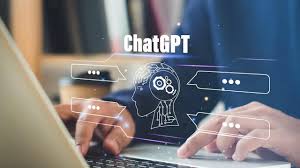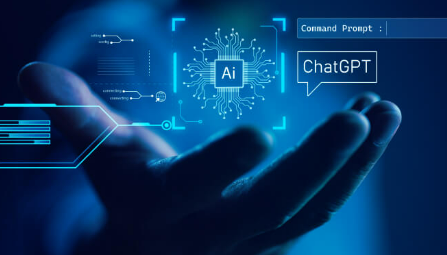Understanding Content Verification with ChatGPT

Introduction
If the question really is, “Are ChatGPT Detection Systems Reliable?” the answer has to be a stRong and resounding yes!
In the ever-evolving realm of AI-powered content creation, a critical concern arises: ensuring the authenticity of the content we produce and consume, distinct from automated sources.
While AI language models like ChatGPT have made remarkable progress in generating text resembling human writing, the challenge remains in differentiating machine-generated content from human-authored text. To address this concern, it’s imperative to assess the reliability of ChatGPT detection systems, focusing on AI model safety and NLP model accuracy.

How Reliable Are ChatGPT Detection Systems?
ChatGPT detection systems play a pivotal role in distinguishing between content generated by humans and content generated by AI. Their reliability is paramount for upholding content authenticity, preventing spam, and maintaining the integrity of platforms relying on user contributions. However, this leads us to the crucial question: How reliable are these detection systems in terms of Chatbot security and NLP security measures?
The accuracy of ChatGPT detection systems primarily hinges on the underlying technology and algorithms they employ. These detectors are designed to scrutinize text and identify patterns that indicate AI-generated content, but they are not infallible, and their performance may vary. Ensuring the AI model validation and the robustness of chatbot detection systems becomes crucial.
Accuracy of Content Detection in ChatGPT
Evaluating the performance of ChatGPT detectors involves measuring various metrics, with precision being a key focus. Precision measures how accurately the detector identifies AI-generated content among all the flagged content, essentially assessing its ability to avoid false positives. Enhancing precision in ChatGPT detectors necessitates fine-tuning algorithms and parameters to minimize alarms, which is particularly vital for platforms employing automated content moderation to avoid flagging user-generated content as AI-generated.
False Positive Rate in ChatGPT
The accuracy of ChatGPT detectors is significantly impacted by the false positive rate. False positives in content moderation occur when human-generated content is erroneously identified as AI-generated. A high false positive rate can lead to filtering or removing user content, adversely affecting the user experience.
Effectiveness of Content Filtering
The effectiveness of ChatGPT’s content filtering is a metric that considers both precision and false positive rates. Striking the right balance in content filtering is paramount, as it is crucial to minimize false positives while accurately identifying AI-generated content. This ensures that legitimate user content is not unfairly flagged while maintaining an accurate detection of AI-generated text.

Evaluating the Monitoring of ChatGPT Content
Monitoring content on a regular basis is essential for platforms that rely on AI-driven content generation and user contributions. It helps create an authentic and safe environment, addressing the concern of Conversational AI vulnerabilities.
Accuracy in Moderating ChatGPT
Moderation accuracy plays a pivotal role in ChatGPT’s detection system. It measures how well the system can identify content that violates platform policies and guidelines, focusing on ChatGPT safety measures. An accurate detection system is instrumental in swiftly detecting and removing inappropriate or harmful content, contributing to the safety of the platform.
Prioritizing Safety and Precision in ChatGPT
Developers and platform operators place a high emphasis on ensuring the safety and precision of ChatGPT’s detection capabilities, addressing concerns related to Trust in automated conversations. Users should feel confident that their content is accurately evaluated to filter out AI-generated spam while maintaining a secure and reliable online environment.
Understanding Content Analysis in ChatGPT
Algorithms Used for Detection in ChatGPT
Machine learning in chat systems is instrumental, and algorithms are employed by ChatGPT detectors to analyze text and identify patterns associated with AI-generated content. These algorithms continuously adapt to keep up with the evolving landscape of AI-generated text, making it challenging for content creators to bypass them.
Improving the Reliability of ChatGPT Detection
To enhance the reliability of detectors in ChatGPT, developers can employ various techniques. Continuous fine-tuning of algorithms, utilization of machine learning, and gathering user feedback are all integral parts of this process, enhancing deep learning for chatbots. By adopting a proactive approach, detectors can improve their accuracy over time.
Reviewing ChatGPT AI Content
The review of content through ChatGPT detectors is a crucial component of content review systems. When users submit content on platforms, it undergoes screening by these detectors to identify any text generated by AI, addressing concerns related to Identifying chatbot deception. This initial review helps ensure that the content aligns with the policies and guidelines set by the platform.
Addressing False Negatives in ChatGPT
While minimizing false positives has been a focus, it’s equally essential to consider false negatives. False negatives occur when the detector fails to identify AI-generated content when it should have. A high rate of false negatives can allow AI-generated spam to go undetected, highlighting the importance of GPT-3.5 detection accuracy.
Evaluating the Performance of ChatGPT Language Model
The evaluation of performance for underlying language models in ChatGPT is pivotal for detector accuracy. The capabilities of the language model, such as generating text resembling human writing, understanding context, and adapting to topics, directly impact how well the detector can distinguish between AI-generated and human-generated content, focusing on Deep learning model trust.
Content Classification with ChatGPT
Content classification using ChatGPT is an integral aspect of detection. Categorizing content into classes, such as content created by humans, generated by AI, spam, and more, is a fundamental task. Accurate classification is essential for content filtering and moderation to ensure safety.
The effectiveness of the language filter depends on the accuracy of ChatGPT detectors. An optimized filter can minimize both false positives and false negatives, contributing to a safer and more reliable system for monitoring content.
Evaluating the screening of ChatGPT-generated content is a crucial part of content moderation. It involves analyzing user-generated material to identify and address any violations of platform guidelines. The accuracy of ChatGPT detectors greatly impacts the efficiency and effectiveness of this process.
Automated content moderation using ChatGPT detectors significantly contributes to maintaining the quality and safety of platforms. It swiftly removes inappropriate content, reducing the workload on human moderators.
Online platforms prioritize ensuring content safety for their communities. Trusting in the reliability of ChatGPT detectors is directly linked to maintaining a welcoming environment. Platforms need assurance that these detectors can accurately identify AI-generated spam and inappropriate content to create a welcoming space for users.
The reliability of content filters in ChatGPT directly impacts the user experience. It’s essential to have filters that are both accurate and efficient, minimizing false positives while effectively identifying AI-generated text.
The accuracy of the language model in ChatGPT plays a crucial role. If the language model consistently produces high-quality text resembling human writing, it becomes more challenging to detect, posing a challenge for content monitoring systems.
To improve content analysis in ChatGPT and enhance detector accuracy, several strategies can be employed:
1. Continuous Training
Regularly retraining the ChatGPT detectors to adapt to AI generation techniques and changing patterns in content.
2. Feedback Loops
Encouraging users to provide feedback to help identify instances where the detectors may incorrectly classify or miss types of content. This feedback can inform improvements in detector performance.
3. Collaboration
Fostering collaboration with the community involved in AI and content moderation, enabling knowledge sharing and the exchange of best practices, ensuring Conversational AI trustworthiness.
4. Advanced Algorithms
Utilizing advanced machine learning techniques and advancements in AI to develop detectors, improving NLP model accuracy.
5. User Behavior Analysis
Combining output from the detectors with an analysis of user behavior to further enhance detection and classification accuracy, addressing concerns about Detecting fake news in chatbots.
Measuring the precision of ChatGPT detectors is a crucial step in evaluating their performance. Ensuring the accurate identification of AI-generated content and avoiding false flags on human-written text is a critical aspect of precision measurement.
Safety measures in ChatGPT are implemented to protect against spam and inappropriate content generated by AI. These measures include using detectors and language filters to maintain a safe environment.
Online platforms heavily rely on ChatGPT and its detectors to implement content safety features. These features play a significant role in preventing content from being shared, ensuring the security of all users.
AI language monitoring facilitated by tools like ChatGPT has become indispensable for platforms. It automatically identifies content that violates platform guidelines, thereby contributing to a better user experience.
To assess the effectiveness of ChatGPT detectors, specific metrics for evaluating content are utilized. These metrics help measure accuracy, efficiency, and safety during the content analysis process. Platforms can then utilize this data to fine-tune their systems for optimal outcomes.

In the realm of AI-generated content, the accuracy of ChatGPT detectors is crucial for maintaining authenticity, safety, and overall user satisfaction. Developing an understanding of these detectors and continuously improving their precision remains a challenge for developers and platform operators. By measuring and assessing the detectors of ChatGPT, utilizing algorithms, and refining their settings, we can guarantee the accurate identification of AI-generated content. This helps to minimize false positives and maintain platforms as inclusive spaces for all users. While no detection system is perfect, ongoing endeavors to improve ChatGPT detectors contribute to a more secure and reliable online environment.